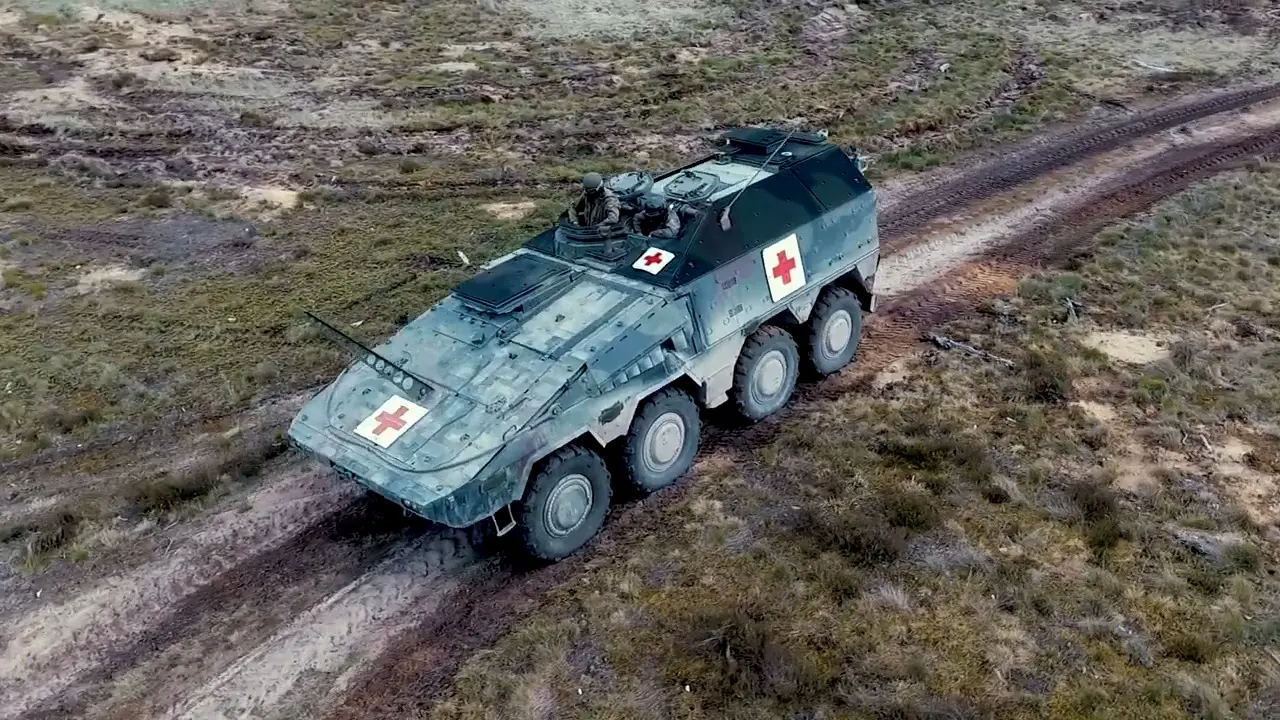[youtue https://www.youtube.com/watch?v=GLJm_yWsWx8]
The Boxer ATV (All-Terrain Vehicle) ambulance is an eight-wheeled multi-purpose vehicle used by the 13th Motorised Brigade of the Royal Netherlands Army as a battlefield ambulance. It can accommodate seven casualties that are seated or three lying down on stretchers, or one of the following combinations: three seated and two lying down, or four seated and a single casualty lying down. The Boxer ATV is a battlefield ambulance and is not equipped to respond to urban or civilian incidents due to its size and weight.

The German and Dutch Boxer ambulance variant utilises a mission module with a raised roofline providing an internal height of 1.85 m and volume of 17.5 m3 to accommodate the increased equipment used in an ambulance vehicle. The Dutch vehicle, a medical evacuation vehicle, differs from the German medical treatment vehicle. In Dutch service the Boxer ambulance replaced the YPR-765 prgwt variant of the AIFV (Armored Infantry Fighting Vehicle) casualty transport. The Royal Netherlands Army ordered 52 ATV (All-Terrain Vehicle) ambulance modules.

The Boxer is a multirole armoured fighting vehicle designed by an international consortium to accomplish a number of operations through the use of installable mission modules. The Boxer vehicle is produced by the ARTEC GmbH industrial group, and the programme is being managed by OCCAR . ARTEC GmbH is based in Munich; its parent companies are Krauss-Maffei Wegmann GmbH and Rheinmetall Military Vehicles GmbH on the German side, and Rheinmetall Defence Nederland B.V. for the Netherlands. Overall, Rheinmetall has a 64% stake in the joint venture.

The Netherlands confirmed in the autumn of 2006 the procurement of 200 Boxers, these to replace the M577 and the support variants of the YPR-765 in the Royal Netherlands Army. Within the RNLA the baseline Boxer is called the Pantserwielvoertuig (PWV). The last Dutch Boxer was produced in July 2018. Variant breakdown following a 2016 contract modification was 12 cargo, 92 engineer (subsequently converted 12 of the 92 to Battle Damage Repair (BDR) configuration), 36 command post, 8 driver training, 52 ambulance.













